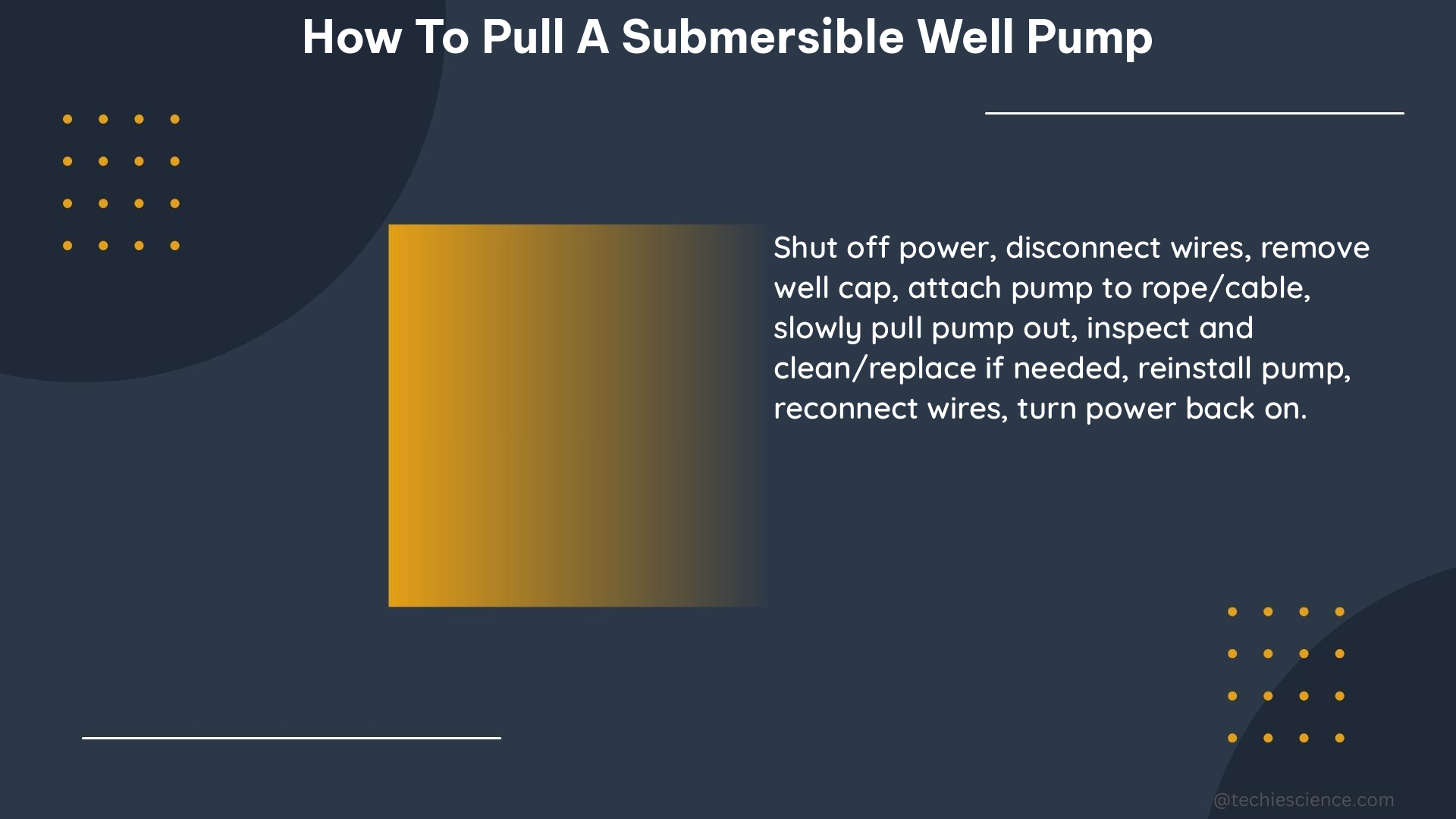Pulling a submersible well pump can be a daunting task, but with the right knowledge and preparation, it can be done efficiently and safely. This comprehensive guide will walk you through the step-by-step process of pulling a submersible well pump, providing you with the necessary technical details and quantifiable data to ensure a successful outcome.
Identifying the Pitless Adapter Type
The first step in pulling a submersible well pump is to identify the type of pitless adapter used in your well. Pitless adapters come in various designs, and each requires specific tools or techniques to release. Here’s a breakdown of the common pitless adapter types and the corresponding tools needed:
| Pitless Adapter Type | Tools Required |
|---|---|
| Threaded Pitless Adapter | Pitless Adapter Wrench (typically a 1-inch pipe) |
| Bolt-on Pitless Adapter | Wrenches, Sockets, and Ratchet Set |
| Clamp-on Pitless Adapter | Clamp Removal Tool, Wrenches |
| Slip-on Pitless Adapter | Slip-on Adapter Removal Tool |
Knowing the exact type of pitless adapter in your well will ensure that you have the right tools on hand, saving you time and effort during the pump removal process.
Measuring the Well Depth

Determining the depth of your well is crucial for planning the pump removal process. The depth of the well will dictate the length of the pump and the amount of effort required to pull it out. Here’s a table to help you estimate the time and effort required based on the well depth:
| Well Depth | Estimated Time and Effort |
|---|---|
| 50 feet or less | 30-60 minutes, relatively easy |
| 51-100 feet | 1-2 hours, moderate effort |
| 101-200 feet | 2-4 hours, significant effort |
| 201-300 feet | 4-8 hours, highly labor-intensive |
| 301 feet or more | 8+ hours, extremely challenging |
It’s important to note that these estimates are based on average conditions and may vary depending on the specific setup of your well and the condition of the pump.
Preparing the Necessary Tools
The tools required for pulling a submersible well pump will depend on the method you choose to use. Here’s a list of the essential tools for each method:
Hand-Pulling Method
- Non-slip Gloves
- Safety Glasses
- Wrench (adjustable or socket set)
- Ratchet and Socket Set
- Screwdriver
- T-handle Tool
- Rope or Pulling Strap
Machine-Assisted Method
- Non-slip Gloves
- Safety Glasses
- Work Boots
- Pulley System or Hydraulic Pump Puller
Ensure that you have all the necessary tools and equipment before starting the pump removal process to avoid delays or safety issues.
Following Safety Precautions
Safety should be the top priority when working on a deep well pump. Always wear the appropriate personal protective equipment (PPE), including:
- Close-toed Shoes or Work Boots
- Thick Clothing (long sleeves and pants)
- Non-slip Gloves
- Safety Glasses
Additionally, be aware of your surroundings and take precautions to prevent falls or other accidents. If you’re working with a machine-assisted method, ensure that the equipment is properly set up and secured before use.
Estimating Time and Effort
The time and effort required to pull a submersible well pump can vary significantly depending on the depth of the well and the method used. Here’s a general guideline:
| Method | Estimated Time |
|---|---|
| Hand-Pulling (50 feet or less) | 30-60 minutes |
| Hand-Pulling (51-100 feet) | 1-2 hours |
| Pulley System (up to 200 feet) | 15-30 minutes |
| Hydraulic Pump Puller (up to 300 feet) | 30-60 minutes |
Keep in mind that these estimates are based on average conditions and may need to be adjusted based on the specific circumstances of your well and pump. It’s always better to allocate more time than you think you’ll need to ensure a successful and safe pump removal.
By following the steps outlined in this comprehensive guide, you’ll be well-equipped to tackle the task of pulling a submersible well pump. Remember to prioritize safety, use the right tools, and be prepared for the time and effort required. Good luck with your project!
References:
- Diagnose and Replace a Submersible Well Pump
- How to Pull a Deep Well Submersible Pump
- Measurable Goals and the NPDES Program

The lambdageeks.com Core SME Team is a group of experienced subject matter experts from diverse scientific and technical fields including Physics, Chemistry, Technology,Electronics & Electrical Engineering, Automotive, Mechanical Engineering. Our team collaborates to create high-quality, well-researched articles on a wide range of science and technology topics for the lambdageeks.com website.
All Our Senior SME are having more than 7 Years of experience in the respective fields . They are either Working Industry Professionals or assocaited With different Universities. Refer Our Authors Page to get to know About our Core SMEs.